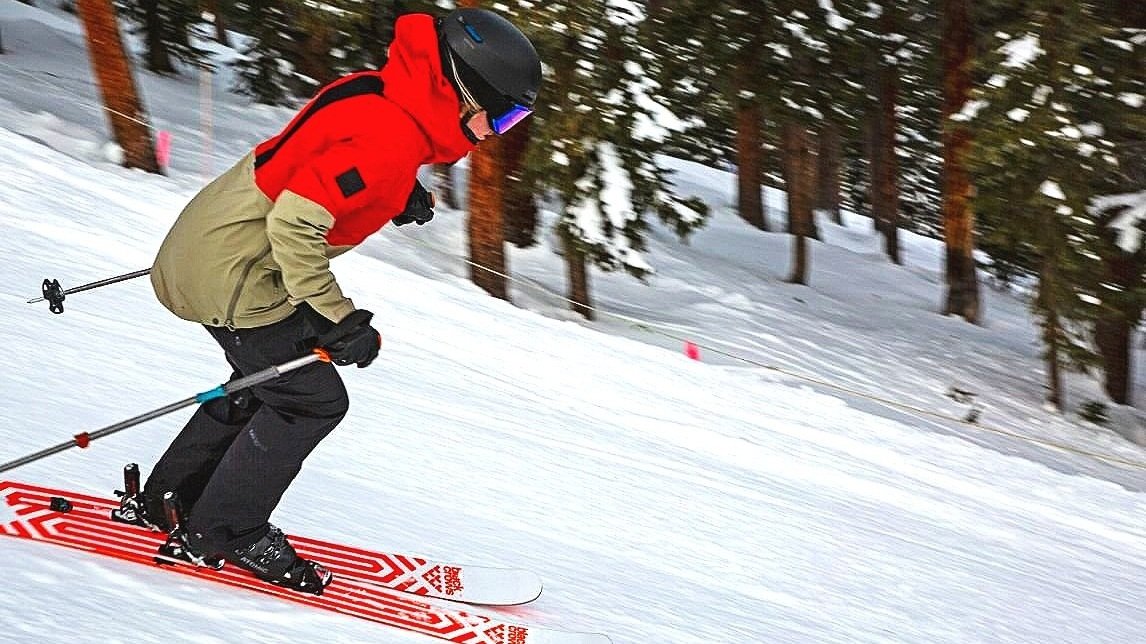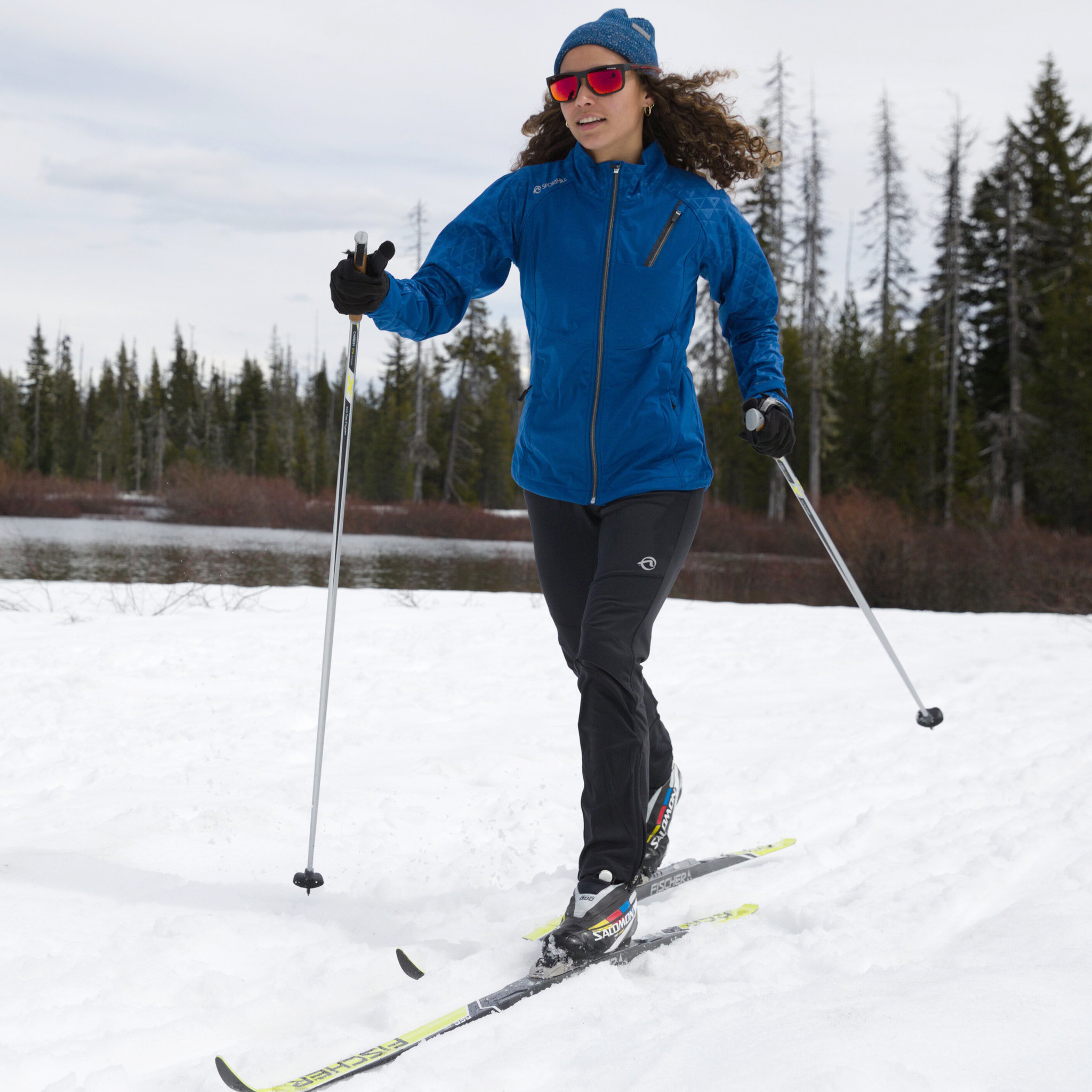
Cross country skiing no tracks is a great way to get out and enjoy the snow without the hassle of groomed trails. It gives you the opportunity to ski on a snowy winter trail uncrowded by other skiers and offers stunning views of surrounding areas.
It's great for stretching your legs and improving your skiing skills. And it's an excellent choice for families and groups of friends looking for a relaxing day out in the snow.
You need the right gear to enjoy cross-country skiing, regardless of whether you are an experienced skier or a novice. Classic cross-country skis, skate skis, poles, boots, bindings and more can all be found at your local Nordic center or online.
Cross-country skiing off-trail requires different equipment, so make sure to take that into consideration when shopping for your gear.

If you're just getting started, you should begin with a pair of beginner-to-intermediate classic cross-country skis and an easy-to-use pair of cross-country ski poles. These will allow you to practice the basics of classic ski stance, shuffle and glide, so that you can build confidence before jumping on a more advanced ski package.
To tackle off-trail terrain, cross country skiers with more advanced skills should consider a pair lightweight backcountry skiing skis. These skis are made with steel edges to allow you to turn on downhills. They also feature a sculpted waistline and rockered tips to make turning easier.
A good set lightweight cross-country skiing skis should have a width that is wide enough to be comfortable for most people and narrow enough so it doesn't cause friction on icy snow. A sidecut, or variation in the ski's width, is also a good feature to give you better control over steeper hills.
Your skis should have the same weight distributed on both sides. As your skis come in contact with snow, you should feel a bit of a "cushy" sensation similar to when you walk on soft ground.
Also, you should 'bounce your skis slightly off of the snow. This will help you 'bounce' into your next turn, instead of sliding off and losing momentum.

Once you've mastered these techniques, you can start to add other skills. To increase speed, you can snowplough parallel skid or kick turn, or use step turns and tucking as a way to avoid obstacles while going downhill.
Always check the weather forecast before you go. This will inform you if the weather forecast is accurate and whether there are any unanticipated issues that could be dangerous for others on the skis.
Forecasts can tell you whether there are any ice patches, blowouts, or other conditions that could make it dangerous to ski. This is especially true when it is cold. These conditions can increase your risk of hypothermia and could require you to leave the trail.
FAQ
What documents should be kept handy while on the road?
To make it easy to find important documents on the road, keep copies at home. Also, keep copies of your passport, driver’s licence, and other identification cards, along with any credit card information, in case you need them, to make it easy to access when you travel.
It's always a good idea for you to have a photocopy with you of your passport in case you need it.
Also, don't forget to include copies of your itinerary and reservations. These will help you to remember where you are and what you want to see.
You should also keep a copy your hotel reservation and flight ticket details. You can contact your family back home easily if you are in trouble.
Also, don't leave valuables unattended. Make sure you have a place to store your valuables, such as a money belt or in your luggage.
You can avoid expensive loss by checking your baggage before you travel.
Remember: It's always safer to keep things simple than to try to over-plan everything.
So just relax and enjoy your journey!
What snacks should I bring to the plane?
You have many options for snacks to take with you when flying. It is a good idea to bring along any food you love while you travel.
For example, if you love chocolate, you might want to pack some chocolates and other treats such as biscuits, crisps, and nuts.
Perhaps you want something savory? You could pack some crackers or cheese.
Consider what type of drink you want to take on board. Maybe you prefer hot or cold drinks?
No matter what type of snack you bring, ensure that they are packed securely and safely.
This way, you won't need to worry about them getting damaged during travel.
How do you travel light?
There is no right answer when packing for your trip. These are some suggestions to help you pick the right items to take on your trip.
-
Only bring what you truly need.
-
Only bring what you are going to wear.
-
Do not buy too many.
-
Be sure to have plenty of space in your suitcase
-
Always make sure you have everything you need.
-
Make use of the free storage facilities
-
Reusable water bottles are better than bottled water.
-
A backpack is better than a luggage.
-
Walking or cycling is a better option than using public transport.
-
Pick the right size bag
-
Do not carry heavy items.
-
Be prepared for any eventuality.
-
Leave nothing behind.
What is the first thing to do after arriving at your travel destination?
Always have a plan in place for when your arrive at a new location. It lets you know what's expected and where to go.
It is important to plan ahead so you don't forget anything.
If you plan to spend more than one day in a given city, it is important to research the museums, parks and landmarks that you would like to see.
Also, you may want to look into getting a map of the area and reading up on the region's history.
Statistics
- No Checked Bags: No Alcoholic beverages with more than 70% alcohol (over 140 proof), including grain alcohol and 151 proof rum. (tsa.gov)
- Alcoholic beverages with 24% alcohol or less are not subject to limitations in checked bags. (tsa.gov)
- Alcoholic beverages with more than 24% but not more than 70% alcohol are limited in checked bags to 5 liters (1.3 gallons) per passenger and must be in unopened retail packaging. (tsa.gov)
- Case in point: the private island of Ilha Caldeira, less than seven miles off the coast as part of the Primeiras and Segundas Archipelago, is located within the marine-protected area with 20 percent of the country's intact living coral. (travelandleisure.com)
- Pack sweaters, jackets, and underwear in reusable compression bags creating up to 75% more space in your luggage. (wikihow.com)
External Links
How To
How to plan your next vacation
Booking flights, hotels, car rental, and activities are just a few of the many aspects involved in planning a trip. It also includes important considerations such as budget, schedule, destination, weather forecast, etc.
These points should be kept in mind while you are planning your next holiday.
We have prepared a step-by, step guide to help with your next vacation planning. This guide has been compiled using customer feedback as well as our own experience. We hope that by following this guide, you can plan your next vacation without any hassle.
Steps:
-
Your Budget Plan - It is important to plan your budget before you start planning your trip. Before you start to think about where to go or what to do, it is important to determine how much money you have available for your trip. If you don’t have enough money, it might be necessary to cancel your trip.
-
Book Flights - The first thing you should do after deciding on your budget is book your tickets. Be sure to get the lowest price flight deal. Also, check if airlines offer any special deals during certain seasons. These deals could help you save a lot of cash.
-
Select Your Destination - After you have booked your flight, you will need to choose where you want to travel. Numerous factors go into choosing your destination.
-
Locate Accommodations – After you've chosen your destination, you need to locate accommodations. You have many accommodation options, from hostels and luxury suites to choose from. Your needs and preferences will determine the type of accommodation that you choose. For example, staying in a hotel may not be ideal if you're looking for a place close to the city center. If you prefer quiet, peaceful places, a homestay may be the best option.
-
Select Activities and Attractions. Now, after you've selected your accommodation it is time to pick the activities or attractions that you would like to add to your itinerary. You can choose to include only certain activities depending on how long you stay. Or, add multiple new activities throughout the trip.
-
You can now determine your schedule. Sticking to a plan will help you maximize the value of your trip. If you have the freedom to roam as you please, your trip will be even more enjoyable.
-
Create itinerary – This allows you to organize all of the details for your trip. You should list all the details, from flights to accommodation to activities to restaurants.
-
Research Online – Make sure you research everything before you leave on your trip. Review and read testimonials to learn what travelers have to say about a destination. This way, you will be able to plan accordingly.
-
Don't Overpack - This is one of the most common mistakes people make when packing. Don't bring five clothes. Bring three. You should bring clothing that suits the conditions.
-
Make sure you are prepared - Be prepared before you set off on your trip. It's not a good idea to spend time looking for documents while you are still on the move.